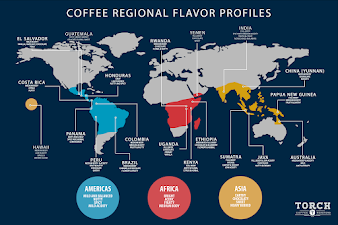We need our daily morning dose of tea or coffee to kick start our day. Ever wondered who makes these beverages and where does it exactly come from ? Here's the story of a coffee plantation giant which is also a part of the largest business group in India, yes "Tata".


Tata Coffee is a plantation company, i.e their business is to get coffee beans from the plants, process it and sell it to other businesses. As of 2020, they have 25,000+ acres of coffee and tea estates majorly in the states of Karnataka, Kerala and Tamil Nadu. The company was started with the name Consolidated Coffee Estates and was managed by a British company. In 1990s, Tata Global Beverages acquired major stakes in the company. In 2000, the company was renamed to Tata Coffee. Let's understand about coffee first before diving into the business.
A unique thing about coffee is that it cannot be grown everywhere. Coffee grows in between the tropics i.e Tropic of Cancer and Tropic of Capricorn generally near mountains. This is because it requires a warm and humid climate which is available in these regions. It is grown majorly in 3 regions : Latin America, Africa, India & Southeast Asia. Brazil is the largest producer of coffee. Vietnam is the largest producer in Asia region. India is the 3rd largest producer in Asia and 7th in the world. There are majorly two types of coffee - Arabica and Robusta. Arabica dominantly grown in Latin America, constitutes 70% of total coffee production and Robusta dominantly grown in Asia, constitutes remaining 30% of coffee in the world. Robusta contains more caffeine and has a harsh taste which is why it is preferred in espresso drinks. Also, Robusta is the coffee used for making Instant coffee (nescafe and bru drink). In India, around 80% coffee comes from the state of Karnataka. As India prefers tea over coffee, 70% of coffee produced is exported. By thumb rule, the western world prefers coffee whereas the eastern prefers tea.
Tata coffee generates it revenues mainly from 4 products : Green beans, Instant coffee, Tea and Pepper. Pepper known as the king of spices is the most demanding spice in the world. As the climate requirement are same as coffee, it is cross-cultivated with coffee plantations. Cardamon and Silver Oak trees are also planted as cross-cultivation with coffee. Tata coffee has 19 coffee estates spanning 20,000+ acres and 6 tea estates spanning 5,500+ acres. Around 18 lakh trees of pepper are cross-cultivated in these estates.
The company has also grown vertically i.e it owns a coffee brand "Eight O'clock" which is the 5th largest selling brand in USA. Tata coffee is also responsible for providing the roasted coffee to Starbucks outlets in India. If Starbucks grows more in India, it will help Tata coffee to grow as well.
Tata coffee is growing organically and has done capital expenditure in 2017 for its new freeze-dried instant coffee plant in Vietnam. The Vietnam coffee plant started its operations in 2019. Tata coffee is trying to get into retail markets with its own speciality coffee. Currently they have launched a premium coffee product "The Sonnets" in Indian market. Tata coffee has 3 instant coffee manufacturing plants in Tooparan(Telangana), Theni (Tamil Nadu) and Vietnam. They also have 1 roasted coffee manufacturing plant in Kushalnagar (Karnataka).
Tata coffee has grown significantly over the years and has gained a strong hold in the coffee plantations business. The thing to look for in future is how will they keep its strong foothold and expand their plantations business. At the same time, it will be exciting to see Tata coffee with its own brands in consumer products competing the other consumer giants in future. Also it will be exciting to see how people starts adopting to Instant coffee as the company is betting huge on this niche.


Comments
Post a Comment